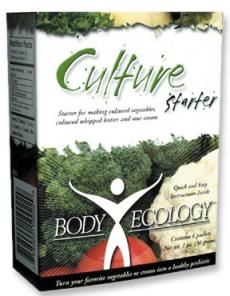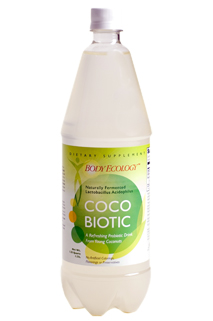Dangers of Drug-Resistant Bacteria in Our Food
Staphylococcus aureus is a common little bug and a normal part of skin flora.
It is the culprit in what are known as staph infections. Staph can also be at the root of more life-threatening diseases like pneumonia, endocarditis, and sepsis. When S. aureus develops a resistance to antibiotic treatment, it becomes a problematic and virulent infective agent known as Methicillin-resistant Staphylococcus aureus, more commonly referred to as MRSA.
A study was released this month with a shocking headline: Multidrug-Resistant Staphylococcus aureus in United States Meat and Poultry.
This study is actually the first of its kind to show that American food supply carries a high prevalence of antibiotic resistant S. aureus.
A team of researchers visited five cities in the United States – Flagstaff, Chicago, Fort Lauderdale, Los Angeles, and Washington, DC – and purchased 136 packages of:
- Ground beef
- Chicken breast and thighs
- Pork chops and ground pork
- Ground turkey
These were bought under 80 brand names and in 26 different supermarkets. The team then went to work. They did three rounds of testing. The first looked for the presence of staph, the second was to identify which strain of staph was present, and the third tested the staph isolate against five classes of antibiotics.
What they found:
- 47% of the samples carried Staphylococcus aureus.
- 96% of the S. aureus isolates were resistant to antibiotics.
- 52% of the isolates were resistant to at least three antibiotics that are used commonly in both veterinary and human drug therapy. One staph isolate was resistant to nine different antibiotics.

Before you reach for that hamburger… Did you know that up to 47% of commercial meat products could contain multi-drug resistant staph bacteria?
The meat samples, according to the type of animal, had a tendency to carry the same strain of staph.
For example, turkey, which had the highest percentage of antibiotic resistant S. aureus at 77%, carried the sequence type ST398.
Lance Price, who led the research team, notes that because each meat and poultry type had its own distinctive type of staph, it “provides strong evidence that food animals were the primary source of the resistant staph. The source wasn’t human contamination of the meat at slaughter, or when it was packaged for retail sale.”
The S. aureus isolates found in meat samples had resistance to the following antibiotics:
- Penicillin and ampicillin
- Erythromycin
- Tetracycline
- Oxacillin, current form of the drug methicillin
- Quinupristin/dalfopristin, known as Synercid
- Fluoroquinolones levofloxacin (Levaquin) and ciprofloxacin (Cipro)
- Vancomycin and daptomycin, last-resort drugs that are reserved for very serious staph infections
At the end of last year, December 2010, the FDA quietly announced for the first time an estimate of the amount of antibiotics sold for use in food animals.
In 2009, United States livestock received 29 million pounds of antibiotics.
Why are livestock receiving antibiotics, and is it appropriate to use so much?
To clarify, Dr. David Wallinga, director of the Food and Health program at the Institute for Agriculture and Trade Policy in Minneapolis says that,
“Antibiotic use in animal agriculture is huge, and as the FDA and CDC and WHO all agree, much of it is unnecessary. Data collection is important. But, because resistant bugs quickly adapt, we can’t afford to wait for data to take action to reduce antibiotic use wherever possible. That includes routine uses of antibiotics for cattle developing liver abscesses because they’re force-fed grain rather than grass, as well as antibiotics used to make animals get fatter faster.”
What this means is that while antibiotic resistance is a growing point of concern in both agricultural and medical fields, so far it is too costly and time-consuming to not use them in the meat production industry. Sadly, animals that are not fed grain at any point in their production are healthier for us to eat; their meat is richer in polyunsaturated fatty acids, as well as antioxidants.
Lance Price, the microbiologist who led the meat study, emphasized that the issue is not so much food poisoning.
Rather, drug-resistant bacteria in meat present the possibility of:
- Cross-contamination
- Ability of microbes to teach other microbes their resistance
Staph is problematic enough. However, these strains can also contaminate the environment and communicate to severely pathogenic bacteria their antibiotic resistance. Joshua Lederberg first noticed this phenomenon, called transduction, in 1952. Microbial transduction accounts for the exchange of genetic information between bugs and antibiotic resistance that quickly develops between species.
Body Ecology recommends always including fermented foods, made with our Culture Starter, and probiotic beverages in the diet to build the microflora in the gut and improve the body’s ability to defend itself from harmful bacteria.
WHAT TO REMEMBER MOST ABOUT THIS ARTICLE:
- When purchasing meat, buy local, organic, and grass-fed as much as possible.
- Grass-fed meat is full of healthy fats and antioxidants.
- Supporting large meat-production farms means that you also support the widespread use of antibiotics in agricultural animal farming and short-cut methods used to fatten livestock.
- Factory farms degrade the environment on a large scale via pollution. On the level of the microbe, studies are finding that they contaminate the environment with drug-resistant bacteria.
- Consuming fermented foods and beverages enhances your body’s ability to ward off pathogenic microorganisms.
PRODUCT RECOMMENDATIONS:
REFERENCE:
- Waters AE et al. Multidrug-Resistant Staphylococcus aureus in US Meat and Poultry. Clin Infect Dis. 15 April 2011. doi: 10.1093/cid/cir181
- 2009 Summary Report on Antimicrobials Sold or Distributed for use in Food-Producing Animals, FDA, Dec. 9, 2010. http://www.fda.gov/downloads/ForIndustry/UserFees/AnimalDrugUserFeeActADUFA/UCM231851.pdf










